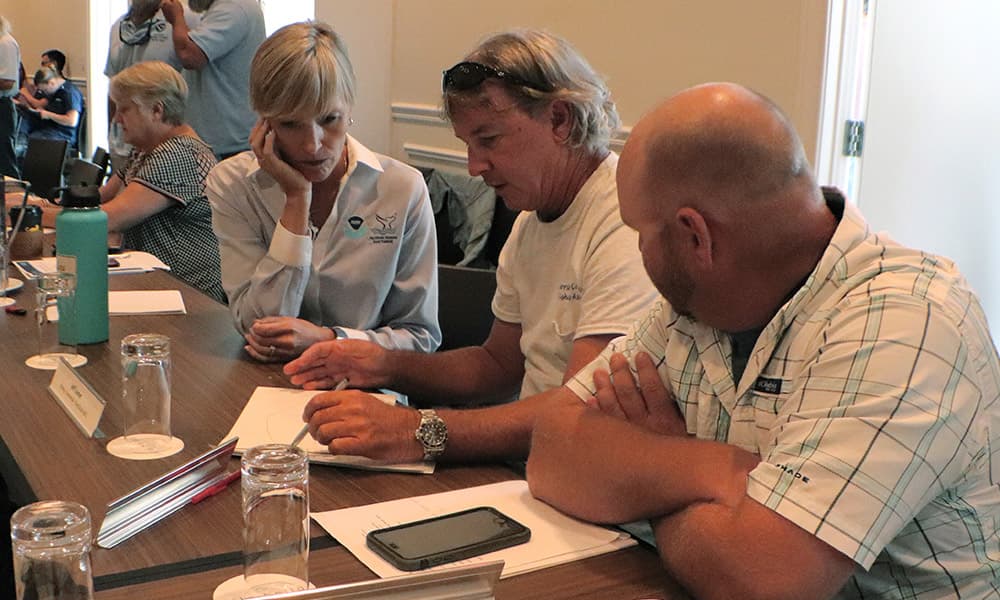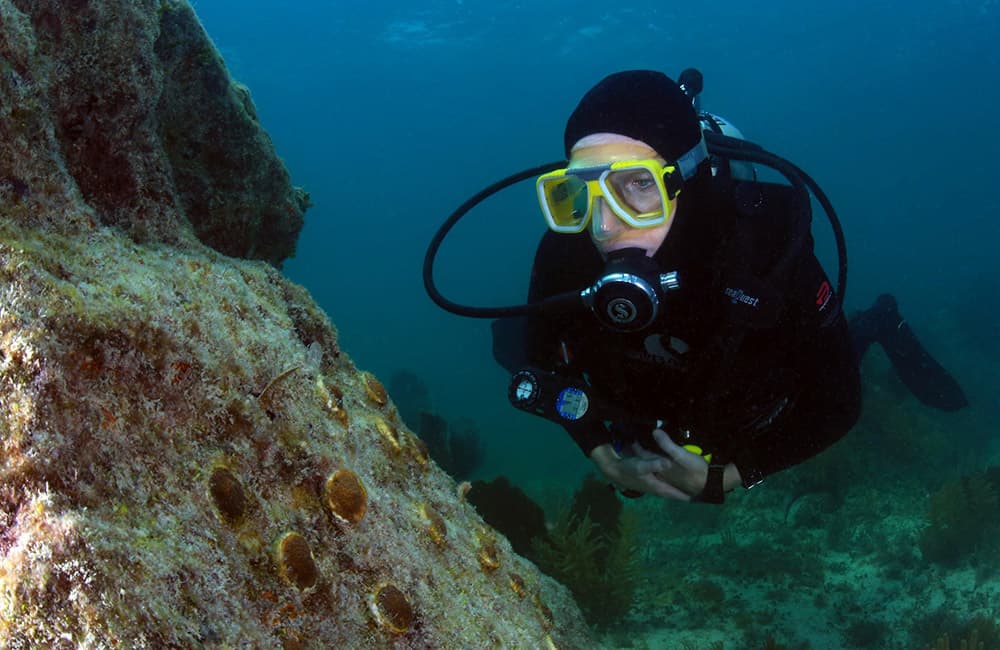Looking to the Future
It is an honor to serve as the Florida Keys National Marine Sanctuary Superintendent during this celebration of 30 years of stewardship. The work of my predecessors in partnership with dedicated community members and steadfast public servants of state and federal agencies is truly impressive, as are the considerable accomplishments achieved in resource protection, engagement and stewardship.
As we look to the next decade and beyond, I am humbled by the important responsibility of serving as sanctuary superintendent, and grateful to have the opportunity to do my part in protecting this national treasure. It is a challenging time. The threats to our marine resources have never been greater: changing water temperatures, rising sea levels, ocean acidification, increasing number and intensity of storms, water quality issues, and unprecedented coral disease. These multiplying challenges follow decades of declines on our reefs. Further, our collective capacity to address these threats is stretched thin. The stakes have never been higher.

When I think about the future of the Florida Keys, I am reminded of my first encounter with a coral reef, and how awe-inspiring it was. I was around 13 years old when I first strapped on a mask and snorkel. The vibrant colors and diversity of life within those turquoise waters overwhelmed me in the best possible way, captivating me to my core. Sadly, the reefs of today bear almost no resemblance to those I encountered as a teenager. In my lifetime, reefs have declined all around the world.
It does not have to stay that way. I truly believe we can turn things around if we dedicate ourselves, collectively, to that effort.
My hope is that young girls who are snorkeling today will bear witness to a story that is the opposite of mine. Those girls will describe the reefs of their youth as declining and covered with disease. When they are my age, they will describe how those reefs recovered through dedicated and creative efforts and immense commitment. They will tell the story of how their reefs are once again vibrant, healthy, and resilient.
But how do we get there? How do we revitalize the marine environment in the Florida Keys, especially in the face of such daunting challenges?
I moved to the Florida Keys the week before Hurricane Irma hit in September of 2017. As a newcomer, I was amazed and inspired by the tenacity and determination this community exhibited in the aftermath of Irma's devastation. The residents of the Florida Keys took a gut punch from that storm, and this community was brought to its knees. However, in the days, weeks, and months that followed, Keys residents showed what we are made of: grit, generosity, creativity, and intense pride in our community.
A bright future for Florida Keys National Marine Sanctuary will be achieved when we tap back into that collective determination. We all value the marine environment that surrounds us. We depend on it for food, for protection, and for recreation. The marine environment of Florida Keys National Marine Sanctuary is a primary thread in the fabric of our culture.
We all share the vision of a better future for our marine environment and we all need to be a part of making that vision a reality. A bright future for the Florida Keys depends upon all of us committing to working together.

For the next three decades to be better for Florida Keys National Marine Sanctuary and the community it supports, we must seek solutions to the big problems: water quality, adequate enforcement, temperature change, and ocean acidification. We should also take on the small stuff that cumulatively can add up to big issues if ignored: vessel groundings, anchor damage, illegal fishing, etc.
In the aftermath of Hurricane Irma, this community demonstrated what determination and dedication could accomplish. Let's harness that energy once again, this time on behalf of our marine environment. And yes, some problems reach beyond our control. However, we do not have to eliminate storms or achieve pristine water quality, we simply need to support resilience in our marine environment. The system must be strong enough, healthy enough, and diverse enough to withstand continued challenges and new threats.

The marine environment of the Florida Keys is unlike any other in our country – it is a privilege to call this place home, and to have the opportunity to serve as stewards of this ecosystem on behalf of our country and for future generations. It is worth protecting and it is worth fighting for together. Our connection to this ecosystem, and to each other through our shared vision, is the engine that will drive our success in bringing about a brighter next 30 years.

